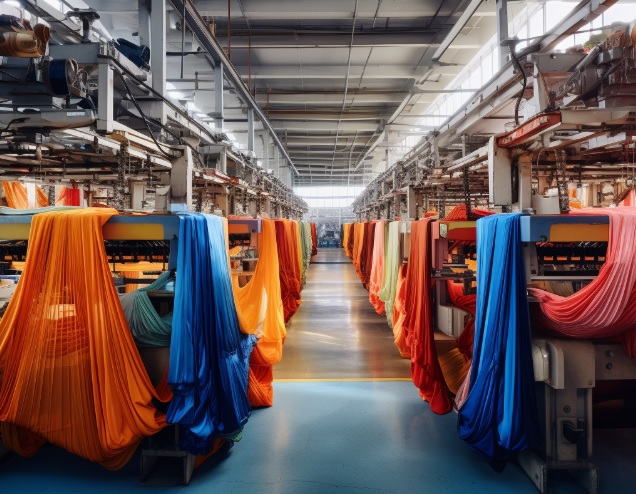"Kim Glas, new the president and CEO of the National Council of Textile Organisations since April 2019, has set a definite goal to revive the flagging American textile industry. She notes the American industry in the last few years has seen a remarkable uptick in employment with the industry currently employing 600,000 workers across the supply chain. In 2018, around 594,147 people were employed in the textile chain and the country’s textile and apparel shipments during the year added up to $76.8 billion. "
 Kim Glas, new the president and CEO of the National Council of Textile Organisations since April 2019, has set a definite goal to revive the flagging American textile industry. She notes the American industry in the last few years has seen a remarkable uptick in employment with the industry currently employing 600,000 workers across the supply chain. In 2018, around 594,147 people were employed in the textile chain and the country’s textile and apparel shipments during the year added up to $76.8 billion. The key market for yarns and fabrics, the Western Hemisphere, is seeing strong growth trends with the FDI in the market increasing.
Kim Glas, new the president and CEO of the National Council of Textile Organisations since April 2019, has set a definite goal to revive the flagging American textile industry. She notes the American industry in the last few years has seen a remarkable uptick in employment with the industry currently employing 600,000 workers across the supply chain. In 2018, around 594,147 people were employed in the textile chain and the country’s textile and apparel shipments during the year added up to $76.8 billion. The key market for yarns and fabrics, the Western Hemisphere, is seeing strong growth trends with the FDI in the market increasing.
The industry is also witnessing an increasing emphasis on innovation with $22.8 billion being invested in new plants and equipment from 2006-2017. The US manufacturers recently opened new facilities across the entire textile production chain to convert waste materials into new yarns and resins.
Focus on sustainability and reshoring
Glas’ top focus is to inform the Congress, the administration and key decision makers about key priorities in terms of legislation or trade policy. Glas also aims to focus on developing the Western Hemisphere, a core trade region that imports around 70 per cent of the yarns and fabrics that the country produces.
terms of legislation or trade policy. Glas also aims to focus on developing the Western Hemisphere, a core trade region that imports around 70 per cent of the yarns and fabrics that the country produces.
In addition, Glas, aims to focus on sustainability by manufacturing more tenable products and revamping the entire production process. NCTO also plans to build a strong communications strategy both for the industry and key decisions makers in the government and beyond.
As the industry prioritises on reshoring manufacturing process for fiber, yarn and fabrics, a lot of apparel suppliers in Los Angeles and New York are planning to expand their operations to other regions. However, it is important for the industry to know the FDI flow in the country and number of jobs that are being created. For this, the country has proposed the U.S.-Mexico-Canada Agreement, which continues the free-trade status with Mexico and Canada and improves certain areas that benefit US producers.
Plans to regulate tariffs
As the tariffs being applied on US manufacturers sourcing of certain materials from China are resulting in additional penalty and tighter profit margins, Glas looks to impose tariffs on finished items imported from China
NCTO has also demanded fair and expeditious exclusions process as it doesn’t believe that under the current framework the tariff process is absolutely correct. As per Klas, the process abuses intellectual property rights and it needs to properly balance the application of these tariffs on finished goods.
As per Commerce Department’s Office of Textiles & Apparel figures, apparel sourcing has already diversified across Asia, the Western Hemisphere, etc. Brands and retailers are shifting over the uncertainty surround next round of tariffs and how it will hit them. Brands expect this to attract more interest either in the Western Hemisphere or with those that have trade benefits with the US.












